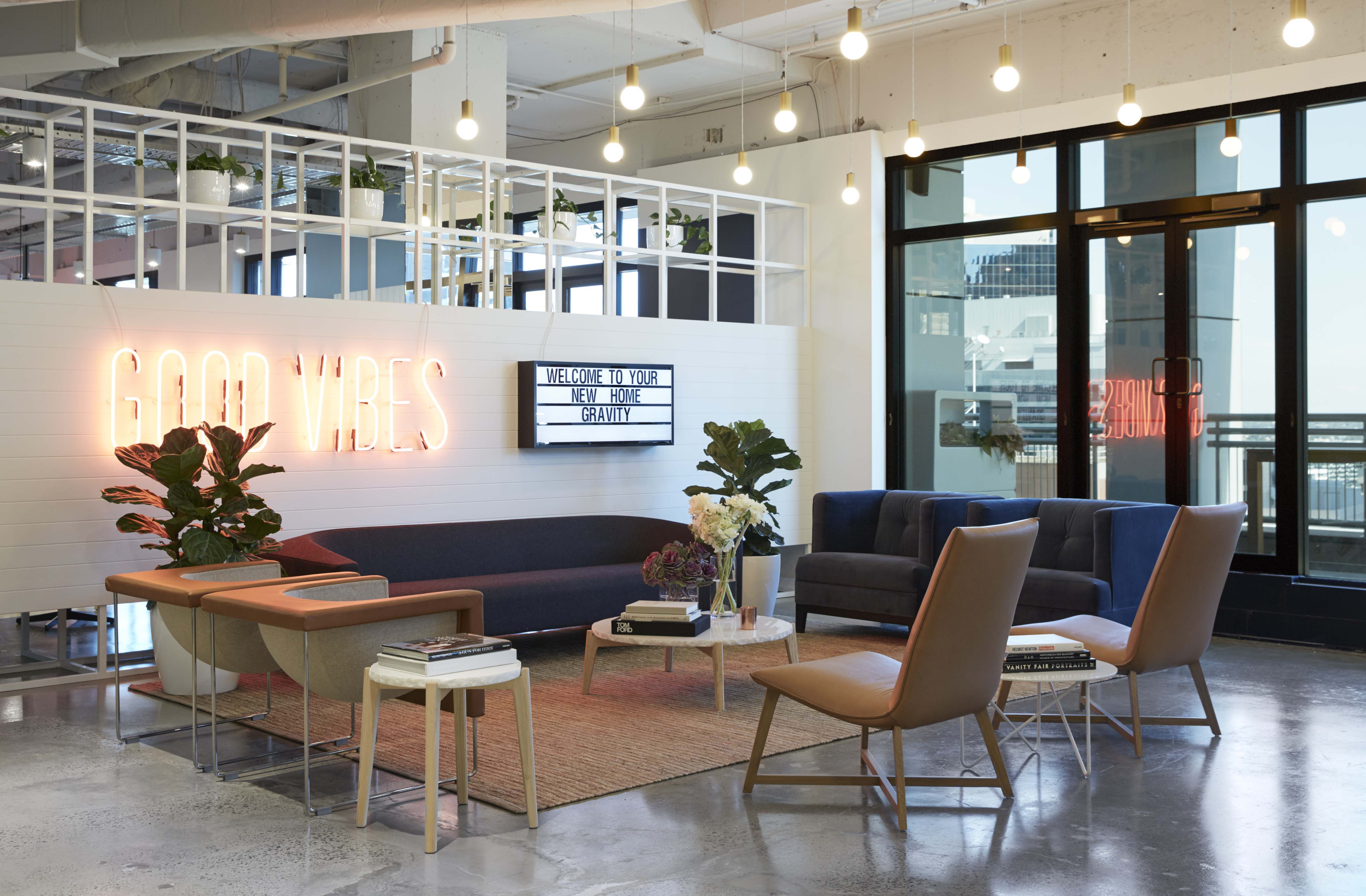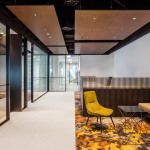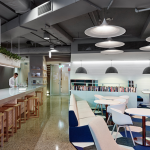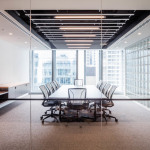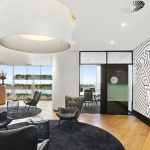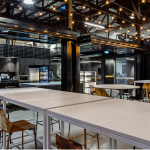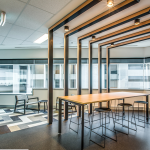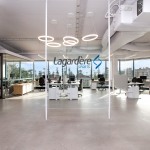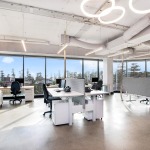Best practice workplace design fosters a flexible yet collaborative environment, driving health, morale and productivity, according to the director of one of Australia’s leading workplace design companies.
Marcel Zalloua of Valmont Interiors told Pine Property that the changing nature of workplaces – from product to ideas creation – has paved the way for a more open, flexible and informal working environment.
However despite the many advantages of allowing staff to work remotely, it can also create silos, strengthening the need for workplace design to facilitate collaboration and teamwork.
“Knowledge sharing is now recognised as a key purpose of the centralised workplace; bringing the team together to share ideas, problem solve and socialise is key to culture and growth,” Mr Zalloua said.
“From a design perspective, this is supported by modular and movable desking, project hubs and proximity to a collaborative zone to support short term working.”
While knowledge sharing is important, research into shared work environments and hot desking – where workers are not assigned a specific desk – has found many negatives. It found that as workspaces become increasingly shared, staff reported increased demands, distractions and uncooperative behaviours. Shared workspaces were also found to be associated with a decrease in trust of co-workers along with perceptions of management support.
However other research has found that a bigger predictor of productivity than desk ownership is a comfortable office with a layout that fosters ease of interaction with colleagues.
The key is having an environment that fosters teamwork, according to Mr Zalloua.
“Organisations need to strengthen teams through collaboration – both physically and using online tools.”
“Culture is largely fostered by an environment that enables staff to come together – collaborate, exchange ideas, share knowledge and belong to a team. Planning for culture will result in different workplaces for different businesses.”
Future business requirements and the trend towards automation and ‘ease of use’ must also be considered.
How much space is required?
Adopting high density planning without appropriate supporting spaces is counterintuitive and will come at the expense of productivity and culture, according to Mr Zalloua.
He said that one staff member per 12 square metres of floor space provides the optimal balance of efficiency and comfort, however added that densities of one staff member per 10 square metres and higher can be comfortable if planned well.
“The higher the density the greater the load on floor facilities; spaces need to have dual purposes to cater for more staff at more times.”
“A boardroom should double as a training room or videoconference room while the staff kitchen should be considered an informal space to entertain and meet with clients, as well as for project teams to collaborate.”
Speaking of commercial office space on Sydney’s Northern Beaches, director of Manly-based Pine Property, Patrick Kelleher said he usually works off around 10-12 square metres per person, but that it depends on the type of business.
“A call centre does not require as much collaborative space as a creative or marketing agency. It really is a case by case scenario,” he said.
“There are also some facilities on the Northern Beaches where they provide common meeting and boardroom facilities. In those instances you can look at six to eight square metres per person.”
During his 15-plus years in commercial real estate, Mr Kelleher said he has seen a definitive change in the way offices are being fitted out.
“People have gone from looking for individual offices and private spaces to large open plan designs. Now the focus is on collaborative areas and strategy spaces,” Mr Kelleher said.
He added that Manly’s popularity for businesses seeking to offer staff a strong work-life balance meant meetings often occurred outside of the office.
Health, wellness and culture:
Healthy and productive workplace design extends beyond density and layout to physical solutions including indoor planting, access to natural light, ergonomic furniture and height adjustable workstations.
‘It has been well documented that improvements to indoor environmental quality has a marked impact on staff productivity, revenue lost to sick days and general wellbeing,” Mr Zalloua said.
“Now, more than ever, organisations are responding to staff needs for healthier workplaces. More recently, that is being critiqued via NABERS ratings, Green Star, and newly, the Wellness Standard Accreditation tool,” he said, adding that it is the sum of these parts that helps build a strong workplace culture, the strength of which is critical.
“Culture is an organisation’s intangible commodity which has supreme influence over its productivity, efficiency and brand strength.”
Benefits to workers of good office design:
- Flexibility in working styles
- A collaborative environment to support personal development
- A healthy workplace that supports ergonomics, environmental quality and retreat areas
- Improved psychological wellbeing
- Reduced sick days
Benefits to a company of good office design:
- Productivity and culture improvements
- Staff retention
- Reduction in absenteeism
- Improved brand recognition
- Expansion due to smarter working platforms and technology integration
